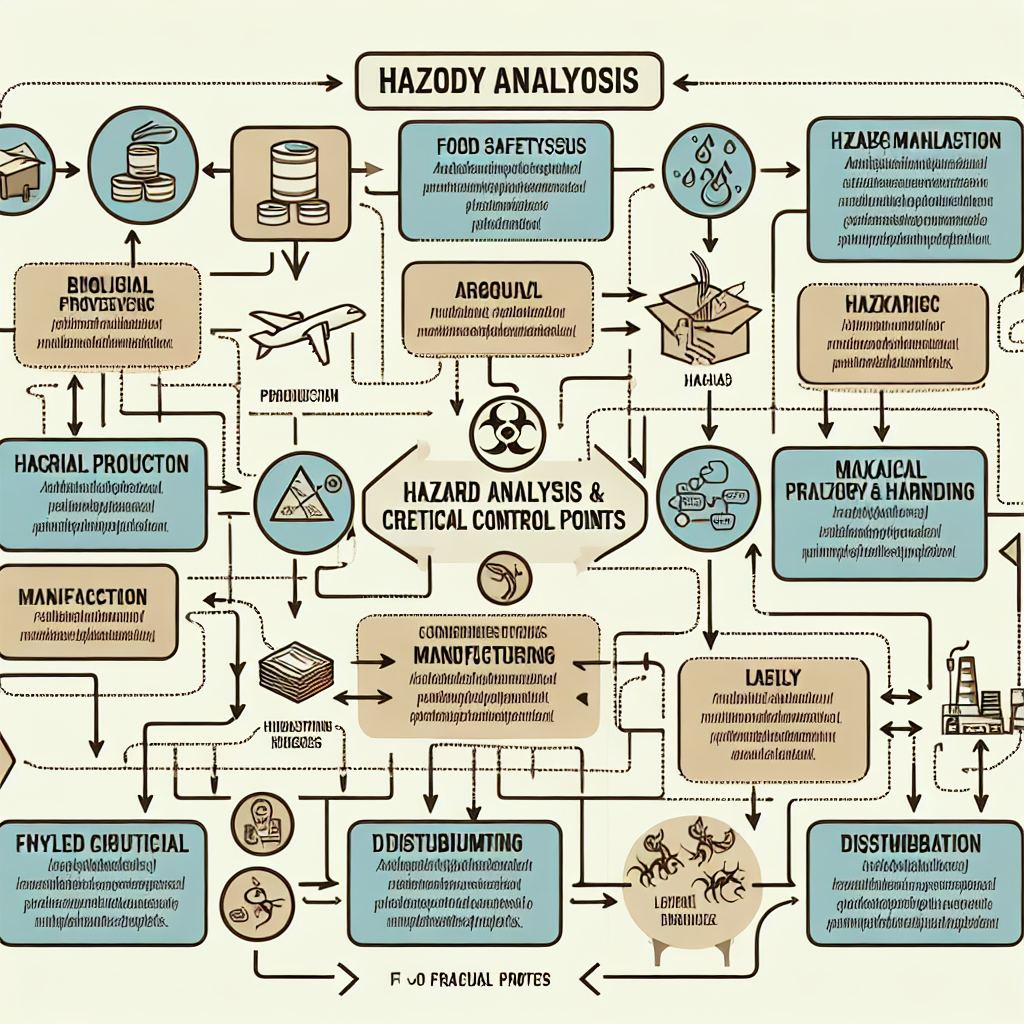The development of a Hazard Analysis and Critical Control Points (HACCP) plan is an essential process for any food processing business. HACCP is a management system that addresses food safety through the analysis and control of biological, chemical, and physical hazards from raw material production, procurement, and handling, to manufacturing, distribution, and consumption of the finished product.
This step-by-step guide will assist food processors in developing an effective HACCP plan to ensure the safety of their products.
1. Assemble the HACCP Team
The first step in developing a HACCP plan is assembling a team. The team should be multidisciplinary, consisting of individuals who have specific knowledge and expertise about the product and process. This could include a team leader, a quality assurance manager, a production supervisor, and workers specialized in particular areas such as food microbiology, processing, engineering, and legal regulations.
2. Describe the Food and its Distribution
The HACCP team must have a full understanding of the product covered by the HACPA plan. The description should include details such as ingredients, method of storage and distribution, and intended use and consumers of the product. This step sets the foundation for identifying potential hazards associated with the product.
3. Construct a Flow Diagram
The flow diagram provides a systematic representation of every step involved in the process from receiving raw materials to the distribution of the finished product. This diagram helps the team to identify every point where potential hazards could enter the process.
4. Conduct a Hazard Analysis
The purpose of hazard analysis is to develop a list of hazards which are of such significance that they are reasonably likely to cause injury or illness if not effectively controlled. Hazards could be biological (bacteria, viruses), chemical (toxins, allergens), or physical (metal shards, bone fragments).
5. Identify Critical Control Points (CCPs)
CCPs are points, steps, or procedures in a food manufacturing process at which control can be applied and, as a result, a food safety hazard can be prevented, eliminated, or reduced to acceptable levels. The CCPs are identified by applying a decision tree which examines if there’s any step where control can be applied to prevent or reduce a food safety hazard.
6. Establish Critical Limits for each CCP
Critical limits must be specified and validated for each CCP. These guide the operations at CCPs and distinguish between safe and unsafe conditions. Critical limits can be based on factors such as temperature, time, pH, water activity (Aw), salt concentration, available chlorine, and sensory information such as texture or visual appearance.
7. Establish Monitoring Procedures
Monitoring procedures must be established for each CCP to ensure compliance with the critical limits. The monitoring system should other the measurements or observations that assess whether the CCP is under control. The frequency and method of monitoring must also be defined.
8. Establish Corrective Actions
Corrective actions are procedures that are followed in response to deviations from established critical limits at CCPs. These should include steps to identify the problem and eliminate the non-conforming product and the cause of the deviation, ensuring no public health hazard occurs.
9. Establish Verification Procedures
Verification ensures the HACCP plan is working effectively. Activities include routine checks of the HACCP system, testing using external experts, and validation of critical limits to demonstrate that the plan controls the hazards effectively.
10. Establish Record-Keeping and Documentation Procedures
Effective record-keeping is essential to the implementation of a HACCP plan. Records should include details of the hazard analysis, the HACCP plan itself, and importantly, the monitoring, corrective actions, verification results, and necessary changes to the process or product. This documentation will serve as a historical document and is essential for the verification and audit process.
By following these systematic steps, food processors can ensure that their HACCP plans are effective and compliant with regulations, thus safeguarding their products and consumers from the risk of foodborne illnesses. Regular updates and trainings are recommended to keep the HACCP plan effective according to the latest scientific and processing insights.
